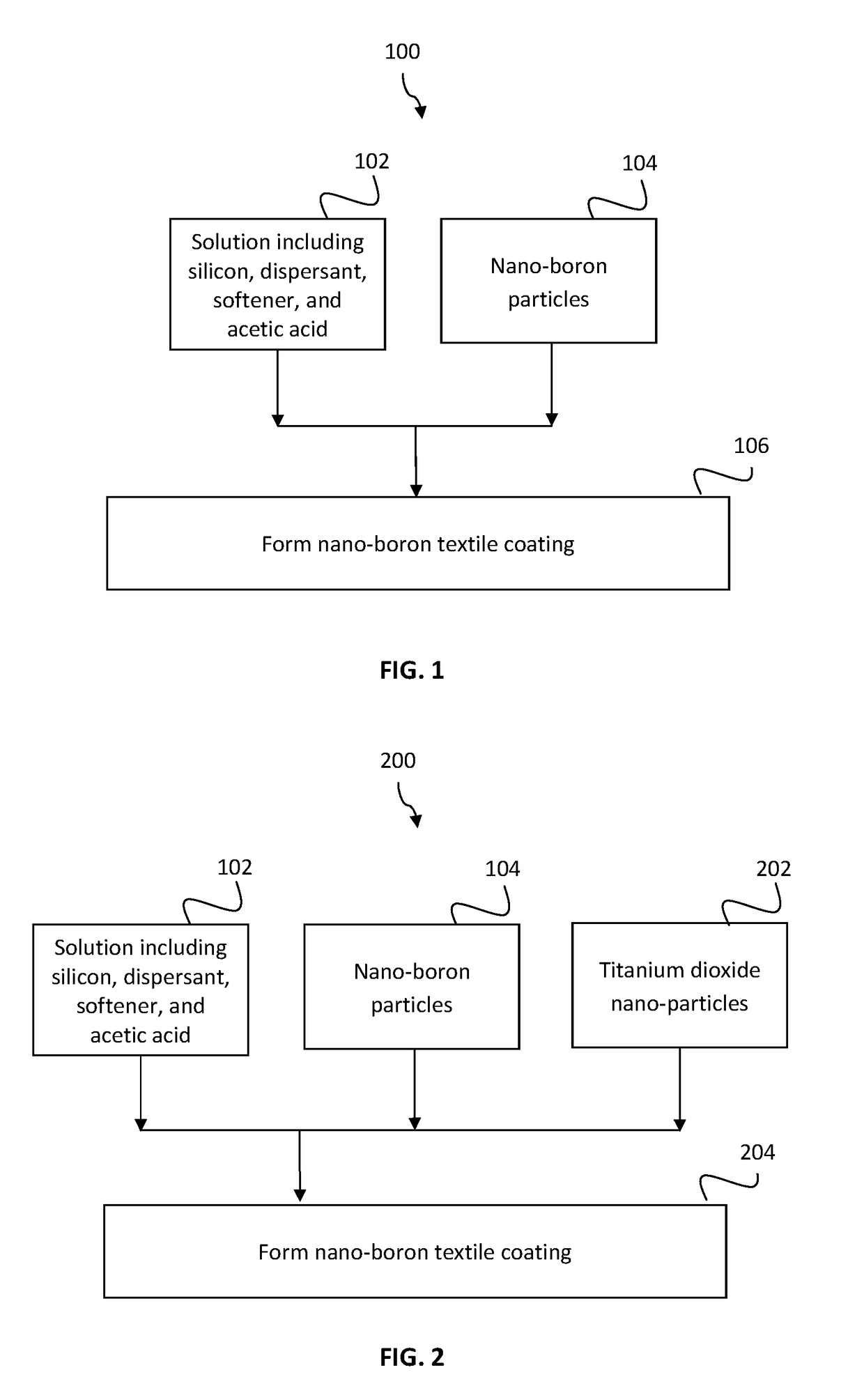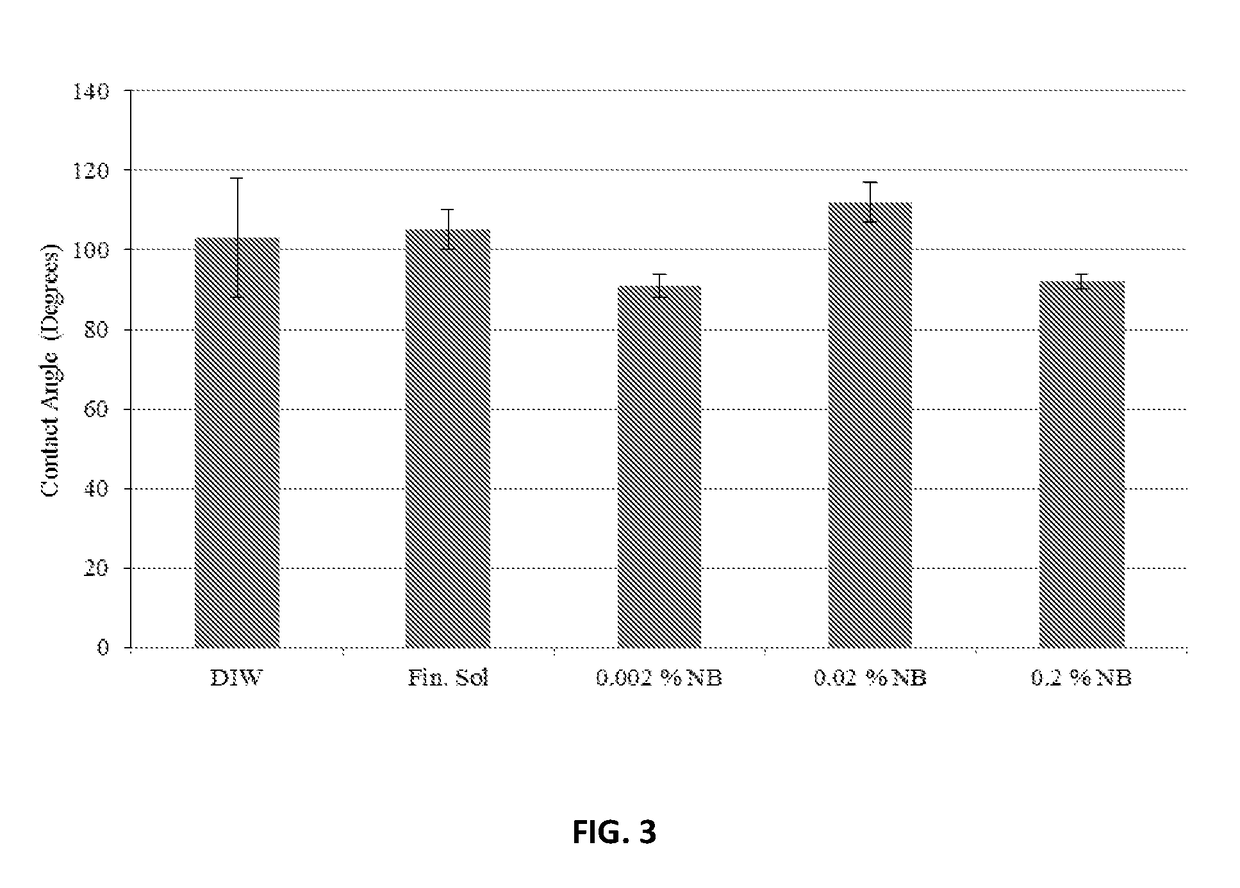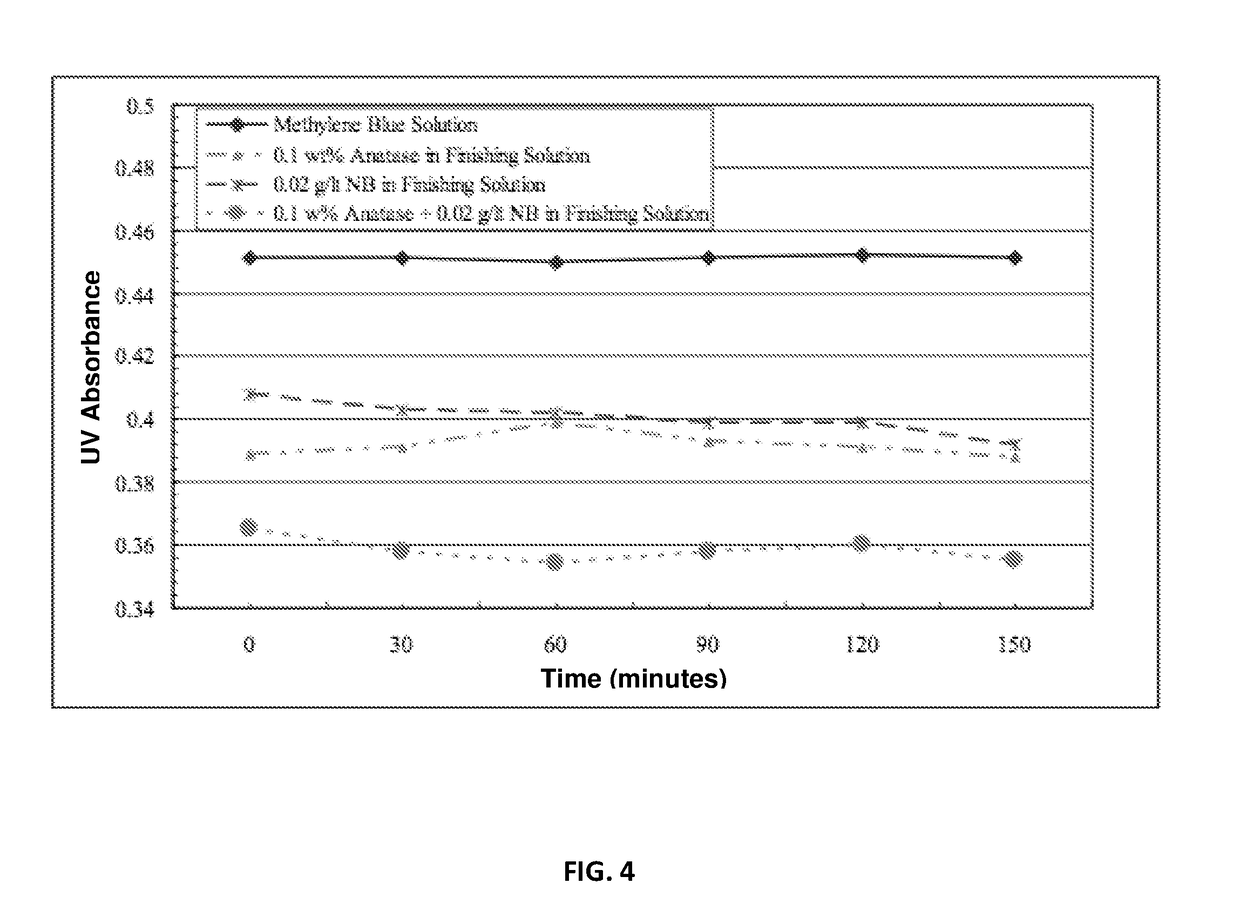Nano-boron for textiles
a technology of nano-boron and textiles, applied in the field of textile coatings, can solve the problems of degrading the performance of textiles, negatively affecting public health, and high death rate from such infections, and achieves enhanced antimicrobial and/or photocatalytic activity or property, improved bacterial/fungal and stain resistance, and high performance.
- Summary
- Abstract
- Description
- Claims
- Application Information
AI Technical Summary
Benefits of technology
Problems solved by technology
Method used
Image
Examples
example 1
on of Nano-Boron Coatings
[0032]Nanometer-sized particles of boron (nano-boron) with 99.7% purity and reported average particle size of 50 nm were obtained from NaBond Technologies Corporation, China. In order to apply the nano-boron on the textile samples, solutions of the nano-boron powder were prepared at 0.002, 0.02 and 0.2 wt % (g / 100 ml) concentrations by dispersing the particles in deionized (DI) water as well as in a textile finishing solution. A textile finishing solution was prepared by using Setasif® for silicon, Serisoft® for softener, Ekoline® for dispersant, and acetic acid with a 2.7 total wt % in composition of DI water and measured pH of 3.52. In order to homogeneously disperse the nano-boron particles, the suspensions were prepared at pH 6 and continuously stirred for 15 minutes. The prepared suspensions were tested for static stability, particle size and zeta potential after their uniform dispersion in DI water and the finishing solution.
[0033]Nano-boron particle s...
example 2
on of Nano-Boron Coatings on Textile Samples
[0037]Solutions of boron nanoparticles (nano-boron textile coatings) were coated by dip-coating on a textile sample having a 47% polyester, 47% viscose and 6% spandex fiber composition. It is noted that other coating application methods may be used to coat a nano-boron textile coating onto a textile, including but not limited to immersion, transfer coating, foam coating, spraying, or other wet application technique.
[0038]Color fastness tests were conducted according to ISO 105-A05 standards. In this method, a single layer of untreated or treated textile sample was fitted in the instrument's holder on the back of an opaque white material. A reference was prepared using the same thicknesses as that of the test specimen. The reference sample was then mounted on the holder to measure its color values with a spectrophotometer and compared to measured color values of the test sample.
[0039]The textile was chosen to be a dark color to test for col...
example 3
lytic Evaluations on Nano-Boron Coated Textiles
[0044]Conventional anatase TiO2 powder was obtained from Nanografi Corporation, Turkey. These powders had a 7.3 nm mean particle size. Untreated polyester fabrics (100% purity, 10×10 cm2 size) were immersed in aqueous solutions of TiO2 at 0.1 wt % concentration and 0.02 wt % nano-boron. Coating applications were performed using sonication for 15 minutes in 250 ml aqueous solutions of nanoparticles of both nano-boron and titania, individually and the combination. Stain decomposing studies were performed under UV light (540 nm).
[0045]Uncoated polyester fabrics and those coated with pure anatase titania, pure nano-boron and the combination of titania and nano-boron were immersed into 100 ml (5 mg / L) methylene blue solution. The samples were then exposed to UV light for 2 hours. The rate of photocatalytic bleaching of methylene blue in aqueous solution was measured by UV / Vis spectrophotometry using a TG80 UV / VIS Spectrometer (PG Inst. Ltd, ...
PUM
| Property | Measurement | Unit |
|---|---|---|
| particle size | aaaaa | aaaaa |
| particle size | aaaaa | aaaaa |
| particle size | aaaaa | aaaaa |
Abstract
Description
Claims
Application Information
 Login to View More
Login to View More - R&D
- Intellectual Property
- Life Sciences
- Materials
- Tech Scout
- Unparalleled Data Quality
- Higher Quality Content
- 60% Fewer Hallucinations
Browse by: Latest US Patents, China's latest patents, Technical Efficacy Thesaurus, Application Domain, Technology Topic, Popular Technical Reports.
© 2025 PatSnap. All rights reserved.Legal|Privacy policy|Modern Slavery Act Transparency Statement|Sitemap|About US| Contact US: help@patsnap.com



